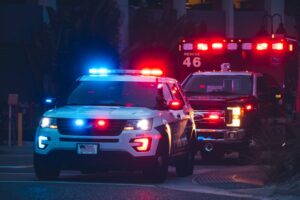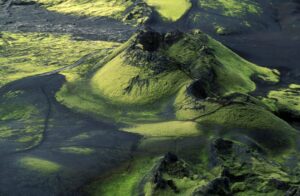This was the largest earthquake in Alaska since the quake in Yakutat, near Lituya Bay, in 1899.
At the head of Lituya Bay, Alaska, on July 10, 1958, an earthquake of magnitude 7.3 triggered a gigantic rock fall, later estimated as measuring forty million cubic yards, at the headland of the bay and a resultant 1,700-foot-high tsunami wave because of the water that was displaced. This tsunami inundated the shores of the bay and, then swept out into the open ocean.
This was the largest earthquake in southeast Alaska since the Yakutat shocks of 1899. The only permanent settlement in the epicentral region was Yakutat. Hence, there was little effect on human settlements. Three persons were killed in Lituya Bay, and two people were missing and presumed dead who were caught in the tsunami.
At Yakutat, bridges, docks, and oil lines were damaged, a water tower fell, and a few cabins were destroyed. Many sand blows and ground fissures were observed on the low coastal plain southeast of Yakutat, and large landslides were reported in the mountains. Submarine cables were severed in the Haines–Skagway area and at Lena Point, north of Juneau. The quake impacted places in California, Idaho, Oregon, and Utah.
Lituya Bay was a mass of floating debris of all kinds in the wake of the exit of the tsunami: floating blocks of ice from surrounding ice fields, some as big as one hundred feet long; huge logs covering much of the Bay but other logs extending out over the ocean for five miles, having been carried there by the tsunami; and almost everywhere on neighboring slopes the land stripped bare of trees for many hundreds of feet above sea level.
Those in boats that happened to be in Lituya Bay as the tsunami began to move were unlucky. Two men who were in one boat were able to escape when their boat sunk and they managed to launch their eight-foot dingy, climb into it, and somehow survive the huge waves before reaching shore. Twenty-five Canadian mountaineers had a lucky escape. They had just returned from a successful climb on nearby Mount Fairweather, the 15,000 plus feet highest peak in British Columbia that is on territory shared with Alaska, and were camping close to Lituya Bay’s entrance on July 9.
The mountaineers flew out of the area on an amphibious plane late in the evening of that day, hours before the earthquake struck. Another lucky party of sixteen men, all geologists, happened to be camped on the shore of Lake Crillon, about eight miles southeast of Litiuya Bay on July 9. They were preparing to move to an island in Lituya Bay next day. News of the earthquake reached them early on July 10.





















